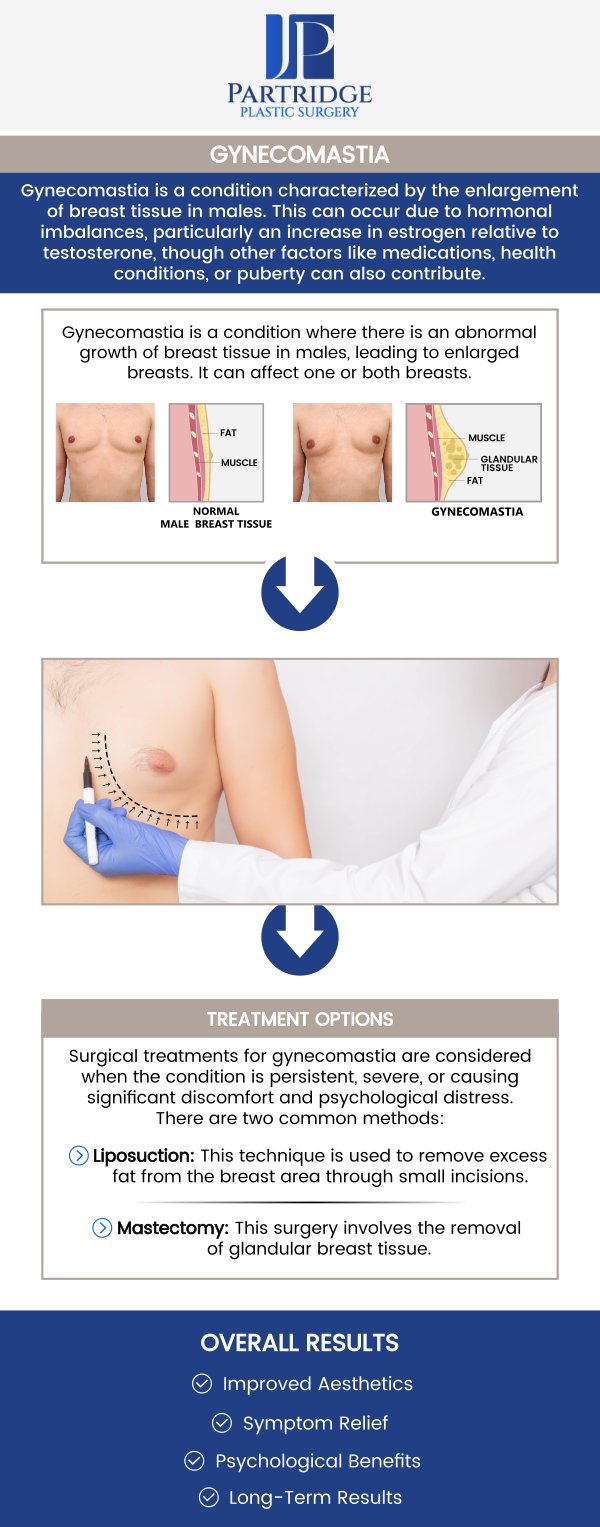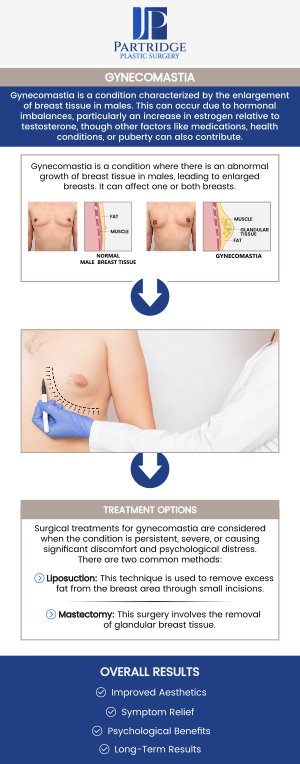Understanding the Causes of Gynecomastia
At Partridge Plastic Surgery, Dr. Joanna Partridge, MD, a board-certified female plastic surgeon, specializes in diagnosing and treating gynecomastia. This condition, characterized by the enlargement of male breast tissue, can occur due to various factors such as hormonal imbalances, genetics, or certain medications. Our team provides comprehensive consultations to help patients understand the underlying causes of their condition and explore effective treatment options tailored to their needs. For more information, contact us today or schedule an appointment online. We have convenient locations to serve you in Princeton, NJ, and North Brunswick, NJ.





Check Out Our 5 Star Reviews


Additional Services You May Need
▸ Breast Augmentation
▸ Breast Lift
▸ Breast Reduction
▸ Breast Reconstruction
▸ Abdominoplasty
▸ Circumferential Body Lift
▸ Arm Lift
▸ Thigh Lift
▸ Buttock Lift
▸ Labiaplasty
▸ Liposuction
▸ Neck Lift
▸ Facelift
▸ Brow Lift
▸ Eyelid Surgery
▸ Fat Injection
▸ Laser Skin Treatments
▸ Injectables
▸ Fat Grafting
▸ Gynecomastia
▸ Abdominal Etching
▸ Reconstructive Surgery

Additional Services You May Need
▸ Breast Augmentation
▸ Breast Lift
▸ Breast Reduction
▸ Breast Reconstruction
▸ Abdominoplasty
▸ Circumferential Body Lift
▸ Arm Lift
▸ Thigh Lift
▸ Buttock Lift
▸ Labiaplasty
▸ Liposuction
▸ Neck Lift
▸ Facelift
▸ Brow Lift
▸ Eyelid Surgery
▸ Fat Injection
▸ Laser Skin Treatments
▸ Injectables
▸ Fat Grafting
▸ Gynecomastia
▸ Abdominal Etching
▸ Reconstructive Surgery







